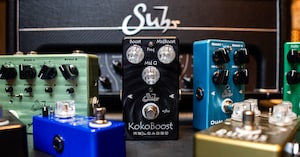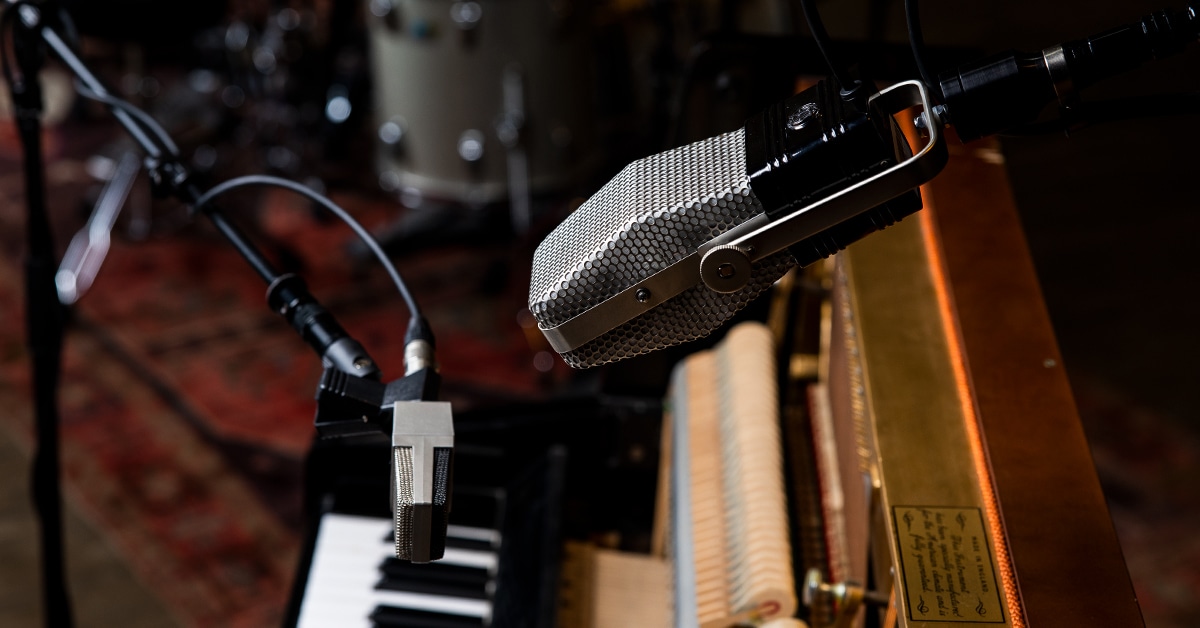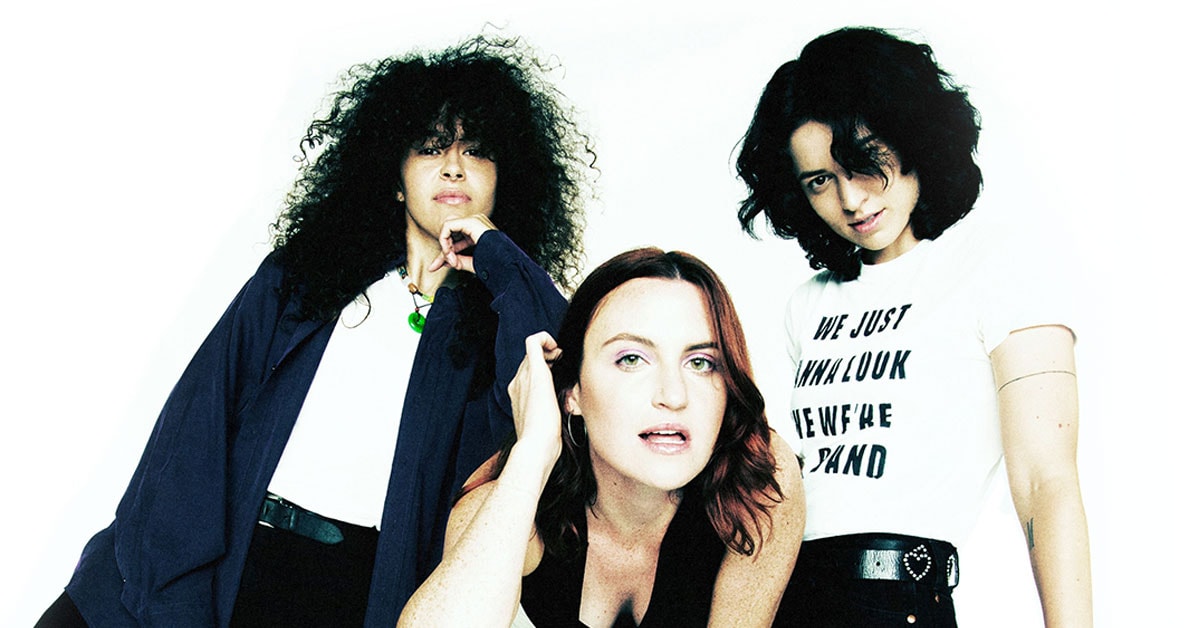Pop band MUNA is anything but typical. A trio of multi-instrumentalists, Katie Gavin, Josette Maskin and Naomi McPherson have a reputation for strong, visionary production choices, with unconventional, warped guitar sounds leading the way. In the years they've been together, the group has already built quite the résumé, with two full-length albums, plus a solo tour under their belt, and supporting spots with Harry Styles, The 1975, and an upcoming tour with Kacey Musgraves. With a recent signing to Phoebe Bridgers' Saddest Factory record label, the band is poised to make their next chapter of collaboration even more impressive.
We sat down with MUNA to learn about how they've evolved over the years, their single "Silk Chiffon" featuring Phoebe Bridgers, and how they use music to tell a personal story.
How did you become a band?
Katie Gavin: I often say that we're a college band. We met in class. I was studying music with Jo, and I met Naomi the following semester. My minor was American Studies & Ethnicity, and Naomi was majoring in African-American studies. Eventually, there was a jam session, and I invited myself and opened up Ableton. What we made that day, I wrote a pop song over.
Tell us about "Silk Chiffon." Why did you write it, and what was the creative process like?
Gavin: We’ve been a band for a long time, and this is potentially our first joyful, queer love song. So, it’s a light story about having a crush on a girl and having a fun night and feeling optimistic about life and being gay. It’s just a cute, little, gay, first kiss song. The song itself developed when I went on a writing trip to Nashville, and I met with Ian Fitchuk and Daniel Tashian, who are two amazing songwriters and musicians. It's very rare for me to do a co-writing session, but I knew that there was something in that song, and they really encouraged me.
As it developed, we sent it to a couple people. One of those people was Marshall Vore, who is a collaborator and drummer for Phoebe Bridgers. Marshall was like, "This is a very beautiful song." And we were like, "Yeah. It would be sick to have Phoebe on it one day." Then that all worked out the way it did over time.

What's your creative process like as a band? What roles do you usually take on in production?
Naomi McPherson: The process tends to be pretty fluid. I do a lot of the drum programming and drum arranging and part writing. My dad's a drummer. I feel connected to that instrument, and I can't play it at all. So, it's a joy for me to be able to channel that into a production thing. But in terms of who plays what, it's very, very fluid. We're all multi-instrumentalists, so it can vary from song to song. Often, Katie will have written a verse or a chorus of a song. We'll bring it in, and we'll flesh it out or we will make a beat. Katie will take it home, write over it, and we'll flesh it out more.
Gavin: One of the things that I always feel really grateful for about being a part of a band is that there is a sense that we're puzzle pieces. I'm so drawn to writing lyrics and getting the story right and getting the song right. I care about the songwriting so much, and I'm compulsive about it, and I need to get it right. But they are both obsessed with the sonic details of hammering something out and really bringing it to life. It's really nice to find collaborators where you can be good at what you're good at and shine where you shine, and there is a sense that we can make something that's better because we're all a part of it.
McPherson: Jo and I have a guitar process down now, with me in a more traditional producer-y role. Jo is such a talented guitarist, like, a truly prolific and amazing player. And a lot of times, she'll throw everything at the wall, and I'll be like, "Track as much as you can, and track anything that comes to mind, and then we will create a part."
Josette Maskin: With "Silk" specifically, the whole chorus, all the pads that you would think are a synth are actually EBows. Naomi will loop record me a bunch of times, and we'll cut it up, and we'll end up making a pad where there's movement that wouldn’t be there traditionally. An EBow is essentially an electronic bow or an energy bow. It is like a magnet that vibrates the string to emulate a traditional bowed instrument, like a violin or a cello. But on a guitar, it makes the note sustain. Sometimes you can hear the actual vibration of the string, which I think adds breadth that you couldn’t really have any other way.
Gavin: The fact that Jo can play the guitar and make it sound like so many instruments has been a part of the development of MUNA's sound. We're a pop band that has two guitarists, and that's not that common in this day and age, so I think you've had to learn to be really versatile with the way the guitar sounds.
McPherson: Our goal with a lot of what we work on now is to make Jo's guitar sound the least like a guitar that you can imagine. There's a few songs we're working on now that you would probably never guess have guitar because it sounds so wild.

Can you tell us more about the kinds of sounds you're digging for or that catch your ear?
McPherson: Very distorted, almost synthesized sounds, fake sounds, like, metallic-y, oddly moving, almost like strings in the way that they move. That's what I'm attracted to—jarring moments of little bursts of energy and harmony and texture.
Maskin: Texture is the biggest thing that we've been exploring. You could have a sample, and play guitar on top of a sample. Even though it's a real recording of a real instrument, it won't have as much breadth because it's something that we downloaded from a sample library, even though it's so cool. So, we'll record a guitar with a specific pedal that has a lot of breadth in it, and Naomi will do their magic. It's interesting how bad something can sound in one context, but layered in the right way makes perfect sense.
McPherson: We'll layer distortion effects on top of each other. The same guitar part will be played four times through different pedals, then combined. We have an amazing mix engineer, Dan Grech-Marguerat. We would not be the band we are without his skill, but I think we've gotten better over the years, in terms of giving him very fleshed out combinations of sounds that satisfy different areas of the sonic spectrum.
Gavin: I think it's also having a couple of tools in your arsenal that, whether people know it or not, become a part of what they associate with your sound. I do think that your slide and your EBow—and consistently making choices with those—have informed the way that we sound because there are little things that allow you to play the guitar in a really different way. There's a little toy amp that we used to record a couple of things on, and it's making choices that—maybe this sounds like shit but in an epic way.
McPherson: Sometimes, the $40 choice is the right choice and the most creative choice.
Your productions are very thoughtfully detailed. How do you keep your focus on the narrative you're trying to tell when you're in the thick of it?
McPherson: Everything is meant to ultimately inform the narrative. You’re really zoomed in, and you’re making small choices. But in your head, you're like, this section needs this because it’s this part of the story. It all eventually supports whatever emotion is at that part of the song. Approaching production narratively is definitely fun. Every sound matters. Everything should be treated with the same respect that you’d like the whole to be treated with. That’s how you make something special. Not everything needs to sound like it cost a million dollars, but you should care about every ingredient you put into the big pop soup.
Can you talk about what this band and this creative collaboration has brought to each of you, and what it's meant to be able to connect with an audience?
Gavin: It's coming up on almost a decade that we've been collaborators. It's hard for people to understand what it means to have this long-term collaboration. When you're making art with somebody, it's a kind of intimacy that is continuously demanding and also incredibly rewarding. I've heard it said before that a band is over when one member of the band stops believing in the other members. Like, you stop respecting their creative output or their ideas, and I just am very grateful that—I feel like these two are the best collaborators I could’ve asked for. I think the world of what they think.
McPherson: I feel that we are brought together by our music because it runs through several layers of filtration. Katie will write a song, and we're the first audience for that song. That song will touch us, and we'll think, God, we have to put this out. It's not my experience but it resonated with me. Then, we get to go out and play shows for thousands of people, and it's maybe not their specific experience, but it resonates with them, and that's such a powerful communal experience.
Maskin: I would say Katie's songs make it feel like there's a higher purpose, especially the songs on the first record, like the song "Loudspeaker." Those songs had messages, but they are encapsulated in a little pop nugget where anyone could eat that and just go dance to it, or listen to the lyrics and have a profound experience where they feel heard and they feel seen. I know a lot of bands who make super-emotional music, but I feel fortunate and lucky that this is the music that we make. The purpose of it is not for my own gratification or because I like playing guitar. It's because someone out there needs to know that they're not alone, and it's important.
 -->{C}
-->{C}










